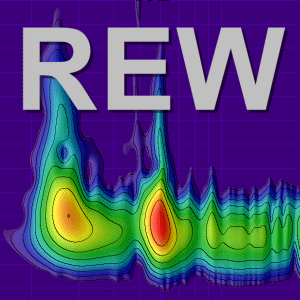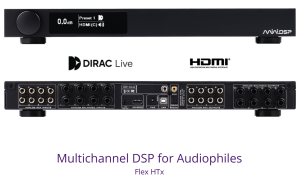Hi,
I'm comparing dB FS and db SPL input readings between a Web Audio application that I'm developing and REW.
There is a big difference between the values I'm getting and what REW is providing.
Setup is :
* miniDSP E.A.R.S Gain: 18dB with calibration files.
* An M-Audio Headset
* REW v5.40 Beta 57 (using the API to read FS and SPL) on MacOS
* Audio Worklet processor
class dBFSProcessor extends AudioWorkletProcessor {
constructor() {
super();
this.buffer = [];
this.bufferSize = 512; // Process samples in chunks
}
process(inputs) { // called every 2.67 milliseconds
const input = inputs[0];
if (input && input[0]) {
const samples = input[0];
let sum = 0;
for (let i = 0; i < samples.length; i++) {
sum += samples ** 2;
}
const rms = Math.sqrt(sum / samples.length);
const dbFS = 20 * Math.log10(rms); // denominator is 1.0
this.port.postMessage({ dbFS });
}
return true;
}
}
I'm sending a 1Hz sine signal to the headset at 96 db SPL (REW reading)
REW dbFS is -25.6 (stable)
My db FS is ~ -49 dBFS and ~ 88 dBSPL (fluctuating even with a 30 second window average)
Also using calibration files (but at 1Hz this is only 0.2 offset difference)
I'm using a fixed SPL offset of 135 for dbSPL calculation
Why would there be a dB FS difference (-25.6 vs -49) ?
Jan Van Riel
I'm comparing dB FS and db SPL input readings between a Web Audio application that I'm developing and REW.
There is a big difference between the values I'm getting and what REW is providing.
Setup is :
* miniDSP E.A.R.S Gain: 18dB with calibration files.
* An M-Audio Headset
* REW v5.40 Beta 57 (using the API to read FS and SPL) on MacOS
* Audio Worklet processor
class dBFSProcessor extends AudioWorkletProcessor {
constructor() {
super();
this.buffer = [];
this.bufferSize = 512; // Process samples in chunks
}
process(inputs) { // called every 2.67 milliseconds
const input = inputs[0];
if (input && input[0]) {
const samples = input[0];
let sum = 0;
for (let i = 0; i < samples.length; i++) {
sum += samples ** 2;
}
const rms = Math.sqrt(sum / samples.length);
const dbFS = 20 * Math.log10(rms); // denominator is 1.0
this.port.postMessage({ dbFS });
}
return true;
}
}
I'm sending a 1Hz sine signal to the headset at 96 db SPL (REW reading)
REW dbFS is -25.6 (stable)
My db FS is ~ -49 dBFS and ~ 88 dBSPL (fluctuating even with a 30 second window average)
Also using calibration files (but at 1Hz this is only 0.2 offset difference)
I'm using a fixed SPL offset of 135 for dbSPL calculation
Why would there be a dB FS difference (-25.6 vs -49) ?
Jan Van Riel














